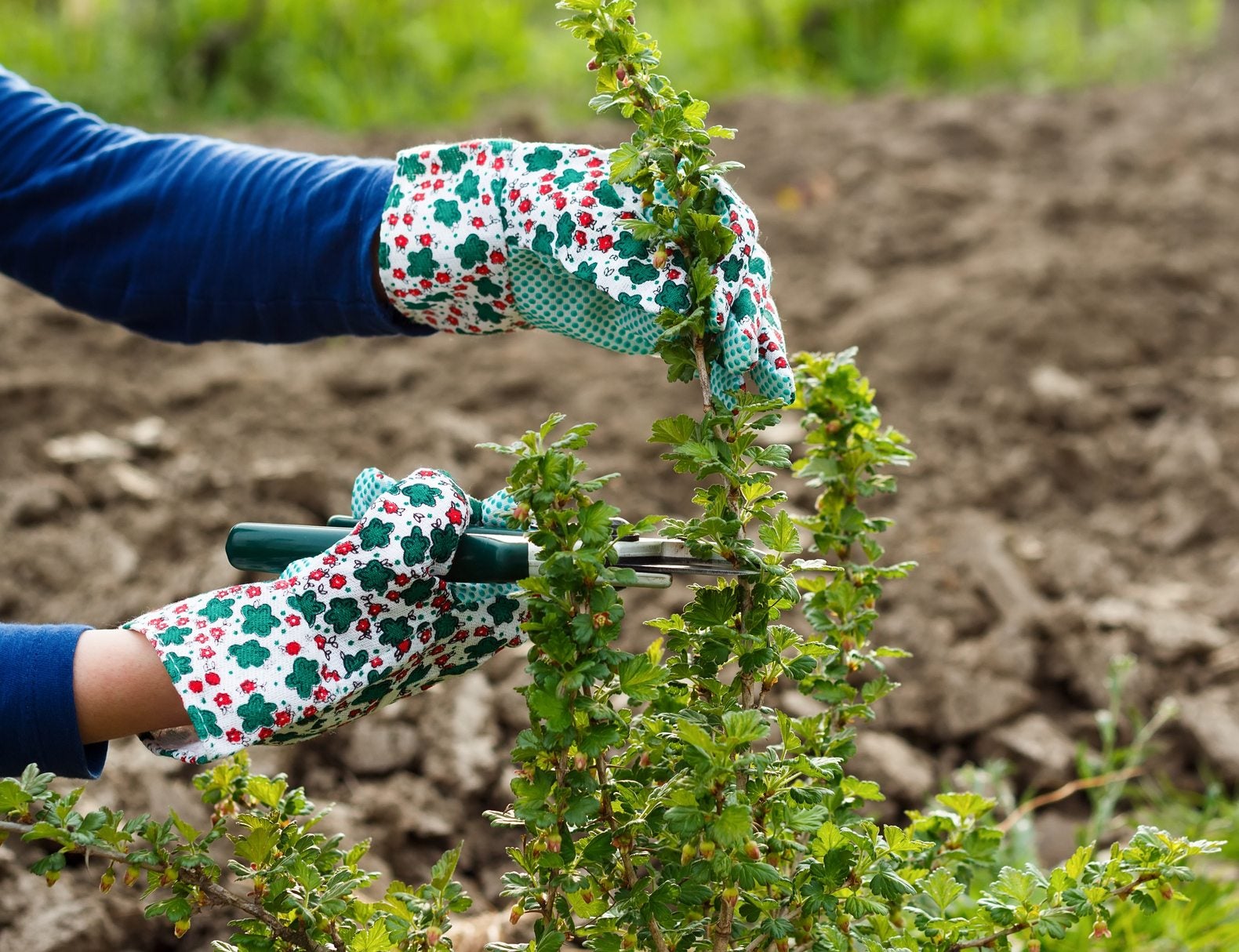Cutting Back Gooseberry Bushes – How And When To Prune Gooseberries

Gooseberry bushes are grown for their small, tart berries excellent in pies and jellies. With arching branches, gooseberries grow around 3 to 5 feet (1-1.5 m.) high and across and do well in cooler climates hardy to USDA zone 3. They can become tangled and unhealthy without pruning gooseberry plants. The question is how to prune a gooseberry bush. Read on to find out when to prune gooseberries and other information about gooseberry pruning.
About Gooseberry Pruning
There are two types of gooseberries: the European gooseberry and the American gooseberry. Almost all of American gooseberry plants have been crossed with European species at some point. These resulting crosses are smaller and more resistant to mildew than their European counterparts. As mentioned, gooseberries can become a tangled mess and susceptible to diseases if allowed to grow unchecked. So, cutting back gooseberry bushes is a worthy practice. The goal of cutting back gooseberry bushes is to keep the center of the plant open to air and sunshine, prune out any dead or diseased branches, and to shorten the growth of the plant to a manageable size as well as to facilitate harvest.
When to Prune Gooseberries
Gooseberries bear fruit on two to three year old branches. When pruning, a good rule of thumb is to keep a ratio of fruit bearing limbs by leaving two to four shoots each of one, two, and three year old wood. Also, prune out any shoots that are older than three years of age. The best time to prune gooseberries is in late winter or early in the spring when the plants are still dormant.
How to Prune a Gooseberry Bush
Before pruning gooseberries, wear some thick leather gloves and sterilize your pruning shears with rubbing alcohol. Prune out any dead or damaged branches on one, two, or three year limbs. Prune the branches out to ground level in the early spring. Prune four year old or older gooseberries in early spring, cutting out the weakest and oldest limbs, again, down to ground level. Leave 9 to 12 stems per bush or cut out all the limbs to ground level, which will encourage the plant to produce larger fruit. If the plant becomes infected with powdery mildew, cut out any stems that appear infected during the growing season. Prune 3 inches (8 cm.) below the infected area, making your cut just above a leaf node. Sterilize the pruning shears before making any further cuts.
Sign up for the Gardening Know How newsletter today and receive a free copy of our e-book "How to Grow Delicious Tomatoes".

Amy Grant has been gardening for 30 years and writing for 15. A professional chef and caterer, Amy's area of expertise is culinary gardening.
